Note: PT Sisirau has refuted elements of this post. See below for details
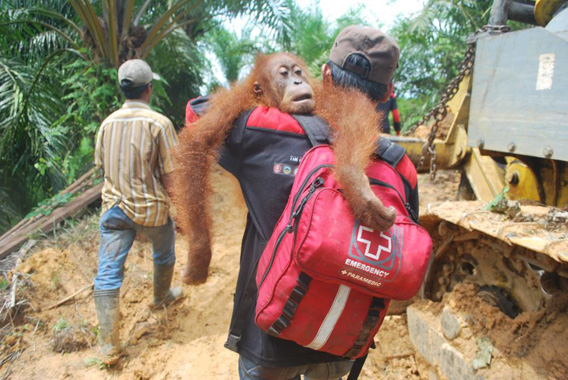
The HOCRU team carry the baby orangutan to safety. Photo credit OIC.
A mother orangutan and its baby were rescued from an area of forest that was being bulldozed for an oil palm plantation in Sumatra, reports the Orangutan Information Centre (OIC), which participated in the translocation of the red apes.
The rescue was conducted by the OIC’s Human Orangutan Conflict Response Unit (HOCRU) with the assistance of the Sumatran Orangutan Conservation Programme (SCOP), the Leuser Ecosystem Management Authority (BPKEL), and the Natural Resources Conservation Agency (BKSDA). It was the second orangutan rescue in ten days at the site.
The female orangutan and her baby were isolated in a patch of forest within an oil palm plantation owned by PT Sisirau, an Indonesian palm oil company, in Aceh Province. Sisirau was preparing to bulldoze the forest, according to OIC.
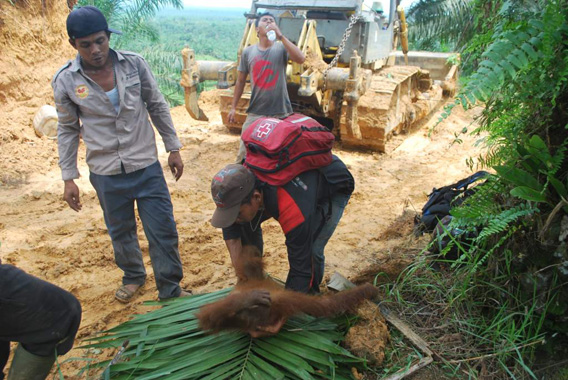
The bulldozers are clearing the remaining forest. Photo credit OIC
The orangutans were captured and released into Gunung Leuser National Park roughly four kilometers from the plantation.
“At 4.15pm, HOCRU, the rest of the team and members of KETAPEL, a
local farmers’ group, released the orangutans in the OIC rainforest restoration site in Besitang,” said Panut Hadisiswoyo, Founder and Director of the OIC, in a statement.
“Mr Hasan Basri, Chairman of KETAPEL, who also helped with the release, said the orangutans
were very healthy and quickly moved to grab tree branches when released. The orangutans
must be very happy to be back in natural forests.”
Sumatran orangutans are critically endangered due to habitat destruction and poaching for the pet trade. Plantation development for palm oil and pulp and paper production are among the biggest threats to the species, which numbers around 6,600 in the wild.
Borneo is also home to orangutans. The population of the four subspecies on the island is estimated at around 50,000. Bornean orangutans are also threatened by oil palm plantations, but subsistence hunting is a significant cause of mortality, especially in Kalimantan or Indonesian Borneo.
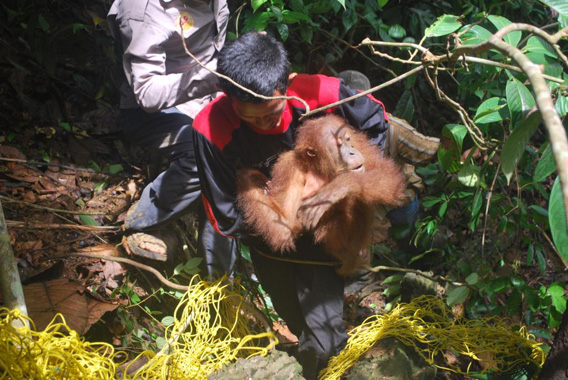
The baby orangutan. Photo credit OIC
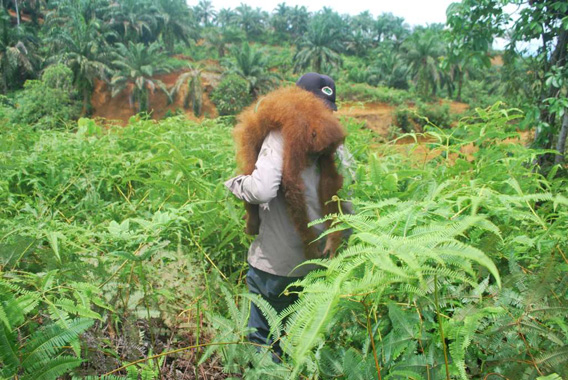
HOCRU carry the baby orangutan out of the plantation. Photo credit OIC
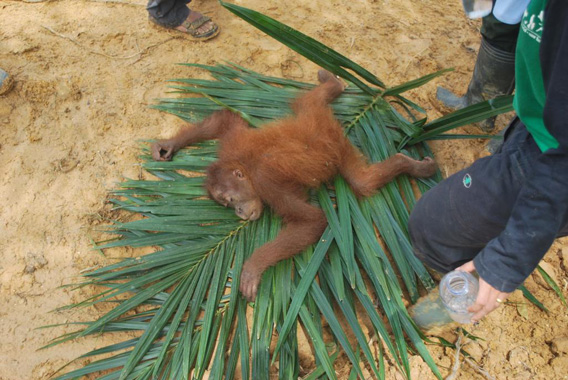
The baby orangutan laid on a palm frond. Photo credit OIC
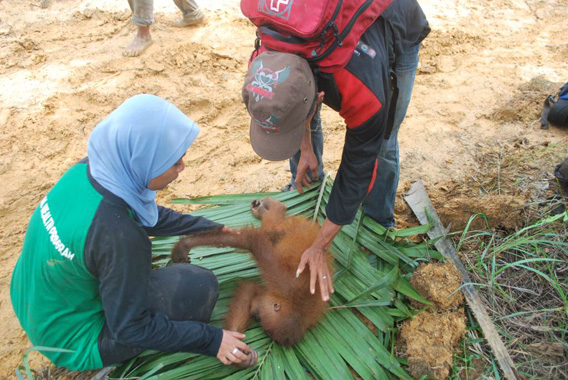
The SOCP vet checks the baby orangutan. Photo credit OIC
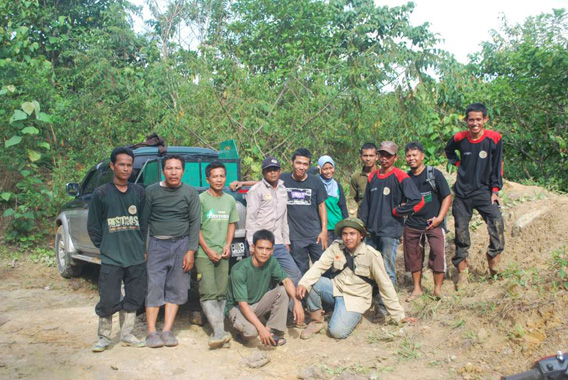
HOCRU and the rest of the rescue team. Photo credit OIC
On November 15, 2012, AOB PR, a UK-based public relations firm, contacted mongabay.com in regards to this post, asserting that OIC’s characterization of the incident is not accurate.
Your article starts by saying: “A mother orangutan and its baby were rescued from an area of forest that was being bulldozed for an oil palm plantation in Sumatra, reports the Orangutan Information Centre (OIC), which participated in the translocation of the red apes.” The story makes no reference to the fact that it was the company PT Sisirau that had alerted animal rescue organisations of the presence of the orangutans in the first place. When orangutans were first spotted on the plantation the company halted all clearing work until the orangutans could be safely and humanely be taken from the plantation. In addition there is no mention in the story that members of PT Sisirau staff actively assisted animal rescuers in their efforts to relocate the orangutans to more suitable habitat. Neither is there any mention of the fact that the company has held a licence to cultivate this plantation for nearly 20 years and it is not and never has been a High Conservation Value forest. Furthermore the orangutans were not indigenous to this area and had only recently strayed onto this land, which is scrubland and far from optimum habitat for orangutan. Your story continues to say: “Plantation development for palm oil and pulp and paper production are among the biggest threats to the species, which numbers around 6,600 in the wild.” Combined with the earlier sections of the story the clear implication of your article is that PT Sisirau do not follow sustainability guidelines in regards to endangered wildlife and in particular orangutans. This is certainly not the case and it should be pointed out that the company has an unblemished record on sustainability and corporate responsibility. PT Sisirau are requesting that you amend or remove the offending article as soon as possible on the basis of the points made above. Also it should be pointed out that at no point were PT Sisirau offered a right to reply to this story and they reserve all rights to legal action. Mongabay contacted the Sumatran Orangutan Society and Orangutan Information Centre, which refute parts of PT Sisirau’s statement, particularly the company’s claim to have halted all clearance operations until the orangutans could be safely evacuated from the plantation. A series of four rescue operations took place between February – September 2012, and SOS and OIC have footage and photographs showing clearance during this time. |
Related articles